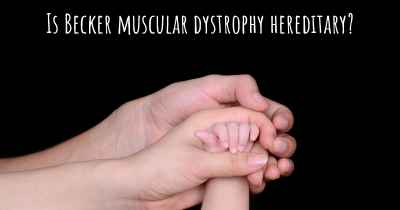What is the history of Becker muscular dystrophy?
When was Becker muscular dystrophy discovered? What is the story of this discovery? Was it coincidence or not?

Becker muscular dystrophy (BMD) is a genetic disorder that primarily affects the muscles, leading to progressive muscle weakness and wasting. It is named after the German doctor Peter Emil Becker, who first described the condition in 1955. BMD is a milder form of muscular dystrophy compared to Duchenne muscular dystrophy (DMD), but it still significantly impacts the quality of life of those affected.
Genetic Cause: BMD is caused by mutations in the DMD gene, which provides instructions for producing a protein called dystrophin. Dystrophin plays a crucial role in maintaining the structural integrity of muscle fibers. In individuals with BMD, the DMD gene mutations result in the production of a partially functional or reduced amount of dystrophin protein. This deficiency leads to muscle fiber damage and weakness over time.
Onset and Progression: The onset of BMD typically occurs in adolescence or early adulthood, although it can manifest at any age. The disease progression is slower compared to DMD, with individuals often remaining ambulatory into their 30s or 40s. However, the rate of progression can vary widely among affected individuals.
Symptoms: The symptoms of BMD primarily involve muscle weakness and wasting. Initially, individuals may experience difficulty with activities requiring muscle strength, such as climbing stairs or getting up from a seated position. As the disease progresses, weakness may extend to other muscle groups, including the arms, neck, and respiratory muscles. Some individuals may also develop cardiac involvement, such as cardiomyopathy, which can lead to heart problems.
Diagnosis: Diagnosing BMD involves a combination of clinical evaluation, family history assessment, and genetic testing. Physical examination may reveal signs such as muscle weakness, calf muscle enlargement (pseudohypertrophy), and contractures. Genetic testing can identify mutations in the DMD gene, confirming the diagnosis.
Treatment and Management: Currently, there is no cure for BMD, but various interventions can help manage the symptoms and improve quality of life. Physical therapy and regular exercise programs are essential to maintain muscle strength and flexibility. Assistive devices like braces, wheelchairs, or mobility aids may be required as the disease progresses. Medications such as corticosteroids can help slow down muscle degeneration and delay the loss of ambulation. Additionally, managing cardiac complications through regular monitoring and appropriate interventions is crucial.
Research and Future Perspectives: Ongoing research aims to develop new therapies for BMD. Gene therapy, which involves delivering a functional copy of the DMD gene to muscle cells, holds promise for treating the underlying cause of the disease. Other approaches, such as exon skipping and gene editing, are also being explored to restore dystrophin production. Clinical trials are underway to evaluate the safety and efficacy of these emerging treatments.
Conclusion: Becker muscular dystrophy is a genetic disorder characterized by progressive muscle weakness and wasting. Although it is a milder form of muscular dystrophy compared to DMD, it still significantly impacts the lives of those affected. Early diagnosis, comprehensive management, and ongoing research efforts are crucial in improving outcomes and finding potential treatments for BMD.








